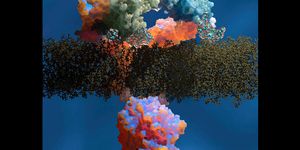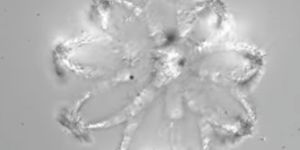What on Earth is F-sand?
If you had to guess, what would you think “F-sand” is? Whatever your answer, I’ll be mightily impressed if you said a cheap and effective water filtration medium made from sand and plant materials. But that’s exactly what it is. This newly developed process comes from researchers at Carnegie Mellon University's Biomedical Engineering and Chemical Engineering Departments, and it may be the answer to providing clean and safe drinking water for the roughly 2.1 billion people who lack that security.
To get an idea for just how many people 2.1 billion is, let’s do some basic math. Our current world population is 7.6 billion. Of those 7.6 billion, 2.1 billion, or 27%, or more than ONE IN EVERY FOUR PEOPLE do not have access to safe drinking water. And with climate change, it’s only going to get worse. So, the point is, we are desperately in need of new, cheap ways to filter water.
Back to F-sand. Using proteins from the Moringa oleifera plant, a tree native to India that grows well in tropical and subtropical climates, the researchers were able to improve upon a pre-existing idea. See, the seeds of this tree are already used for basic water purification but the water that is filtered with this strategy only produces water that is potable for approximately 24 hours. In order to improve this system, co-author of the study, Stephanie Velegol, adhered the proteins of the tree’s seeds to the surface of silica particles from sand. The result was a process that both kills microorganisms and reduces turbidity by sticking to particulate and organic matter that can be washed away. And voila! F-sand!
There are other perks about the F-sand process in addition to its versatility and accessibility in developing regions. First-off, it’s a reusable technology. Also, the fact that it uses proteins from a plant that is already cultivated for oils and doesn’t rely on those oils in order to function means that people can use the tree for both purposes – to increase economic gains by selling oil as well as filter water via the proteins needed for F-sand. Another perk: further research conducted by the scientists determined that the seed proteins in F-sand were able to efficiently adhere to the silica particles and suspended contaminants in both soft and hard water conditions. (Water hardness refers to the amount of dissolved minerals in the water.) The significance of this is that the process will work in a wide variety of conditions with different water hardness, just like what is actually found out in the field. Lastly, because F-sand requires a low concentration of seed proteins, there is a lower initial investment cost and it is easy to conserve materials.
In the end, it’s its simplicity which is its biggest asset. Referring to the challenging task of bringing effective water filtration to developing regions, co-author Bob Tilton says, "It's an area where complexity could lead to failure -- the more complex it is, the more ways something could go wrong. I think the bottom line is that this supports the idea that the simpler technology might be the better one."
Sources: Science Daily, Langmuir









